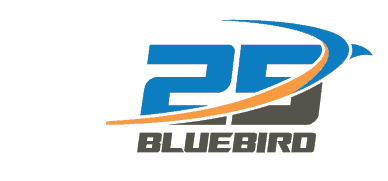The telecom industry can be intimidating to dip into when looking at a wealth of acronyms and abbreviations that make up the industry language. We at Bluebird Network want the digital horizon to be accessible to everyone, and with this blog we hope to shed light on some of the most utilized terms you might come across. We already dipped into the concepts of some key terms in the first blog of this two-part series, which can be read here. This blog will focus on the following terms: Disaster Recovery, Business Continuity, Sustainability (as it applies to data centers), N+1, NOC, and B1.
Disaster Recovery
This term refers to a set of processes and backup procedures that enable the recovery of data, IT systems, and infrastructure in the event of a disruption. This could include natural disasters, power outages, cyberattacks, or equipment failures. The goal of disaster recovery is to minimize downtime, mitigate data loss, and restore operations as quickly as possible in the event of an emergency, ensuring business continuity.
Business Continuity
Business continuity entails being able to continue essential services through outages, often routed through another data center in the backbone of the operator’s facility chain. This is a common and critical service for data center operators to have in order to keep customer services functional at all times. This practice also needs to support internal operations for the data center staff such as access to conference and break rooms, reliable PC workstations, telephones, ethernet drops and printer access. These services should be supported by highly resilient critical infrastructure to ensure continuous availability, such as UPS supported power with emergency backup generators. Business continuity can also mean identifying potential risks, developing contingency plans, and implementing measures to mitigate and manage said risks.
Sustainability
We’ve all heard the term sustainability, but sustainability in data centers refers to adopting environmentally responsible practices to minimize the environmental impact of data center operations. This includes reducing energy consumption, utilizing renewable energy sources, optimizing cooling systems, and implementing efficient hardware designs. Sustainable data centers strive to minimize carbon footprint, conserve resources, and promote eco-friendly practices throughout the facility’s lifecycle.
N+1
N+1 is a design principle commonly employed in data centers to ensure redundancy and reliability. Simply put, it means having more than one entry and exit point for network connectivity cables into the facility. This ensures that if one is interrupted for any reason — quite commonly construction — services can still run in and out of the data center. N+2 can also be seen, which means that there are even more than two entry points, and so on.
NOC
NOC refers to the Network Operations Center. This is a central facility maintaining network infrastructure and services within a data center itself. It serves as a “command center,” providing real-time monitoring, troubleshooting, and support. The NOC ensures the smooth functioning of data center operations, proactively addressing any network-related issues and ensuring high availability and performance.
B1
B1 is a classification used to determine the level of fire resistance in data center facilities. It is a scoring system that indicates the fire resistance of the building structure and materials. The classification signifies a high level of fire resistance, meaning that the building and everything in it has undergone rigorous testing, and are designed to withstand the hazards associated with fires and smoke damage. This is important for potential customers to examine, since it directly speaks to the risk of damage and ensures the safety of critical data storage.
These are just a few of the many technical terms used in the data center industry. Understanding these key terms can help you better grasp the complexities of data center operations and make informed decisions when selecting a reliable data center provider for your business requirements.
At Bluebird Network, we are dedicated to offering world-class fiber internet and data transport services in the Midwest, supported by robust infrastructure, mission-critical reliability, and advanced BMS technologies. Bluebird also owns and operates two data centers in Springfield, Missouri, and Bettendorf, Iowa.
Learn more about Bluebird Network’s data center capabilities: https://bluebirdnetwork.com/

Recent Comments